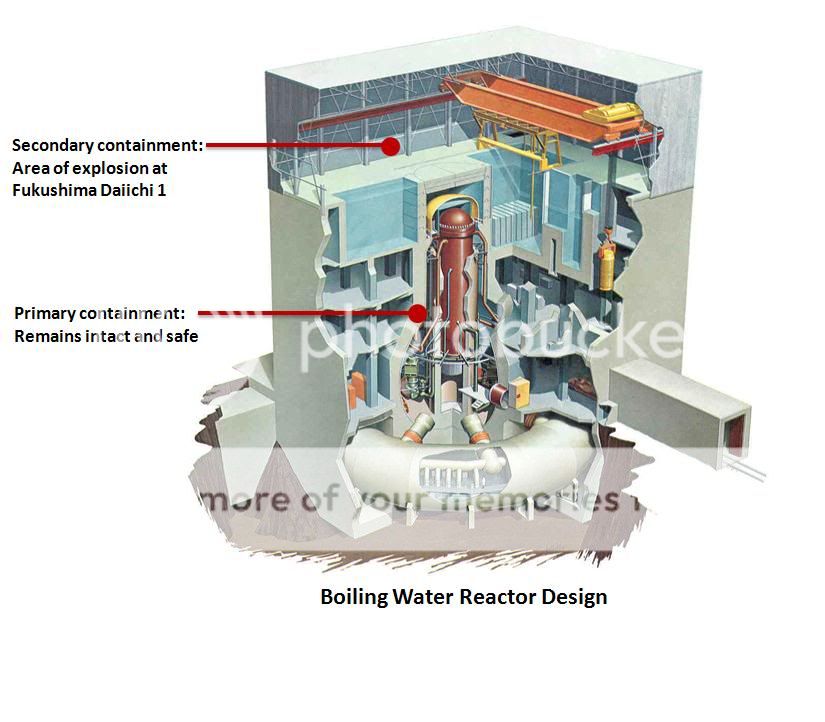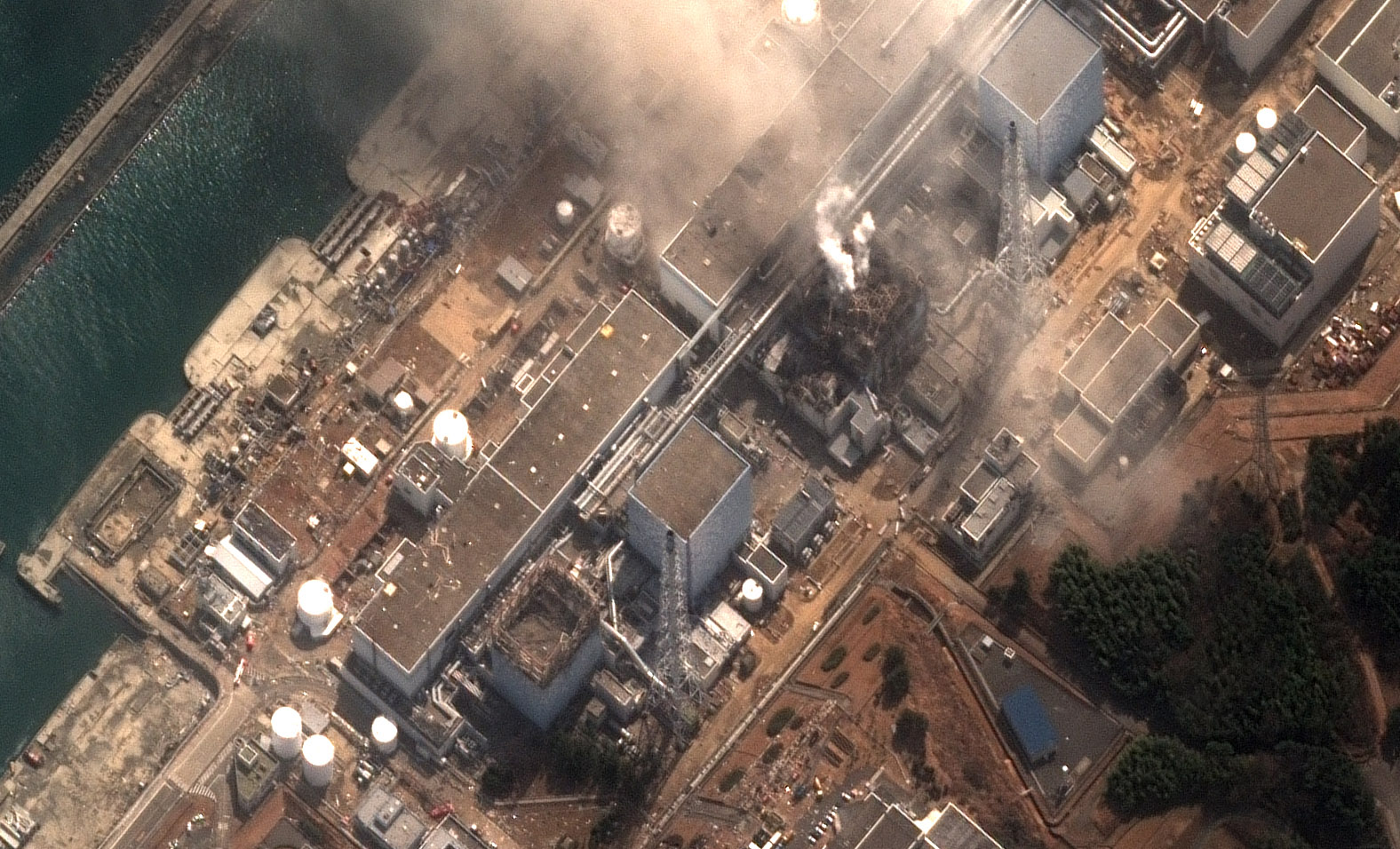Relevant article: Japan's nuclear crisis and the 2011 earthquake tsunami: Let's cool the political meltdown.
There is a cumulative amount of radiation emitted by coal power plants, which is significant, but this is dwarfed by even a single event such as Chernobyl. There’s a stat trotted around out there that Chernobyl released 35 times as much radiation as all coal plants combined over 155 years. I can’t back it up yet, so I’m going to do some calculations.
Coal contains uranium, thorium, radon, radium, etc. at ppm or fractions of a ppm level, but when you consider that a medium-sized plant might burn several million tons of coal per year, even 1 ppm is several tons per year.
So long as the plants don’t blow up, nuclear plants do emit less net radiation than coal. However, one must also consider the quality of the radiation - uranium 238 which is what is typically found in coal, while radioactive, is not something like plutonium or strontium-90.
I would have no idea exactly how much radiation is released by an oil refinery fire; I would suspect not very much since oil contains far fewer radionucleides than coal, and the amount of oil burned in a refinery fire is many orders of magnitude lower than the amount of coal burned at a single medium-sized power plant in a year.
I didn’t post in this thread to defend coal, I posted to defend nuclear.
I find it hard to believe that with the explosions, the primary containtment building was not breached. Furthermore, I have read that they had spent fuel rods stored in the upper portion of reactor number 3, which will be now exposed and thrown who knows where.
Here is a detailed picture of the plant with the damage shown to reactor #1 and 3.
Click the image, and again to enlarge.
Why? Did you see the video I posted earlier? You can dive fighter jets directly into those things.
Ok, interesting video.
But in that example, it appears the secondary containment survived the impact.
What we have in Japan is a secondary containment failure, which is the strongest part of the containment system.
The explosion from the hydrogen gas has taken that out, leaving the metal box exposed to the environment.
The reason for the blast to begin with, was because of the reactor core turning that steam into hydrogen and oxygen, and boom.
So, the reactor is still active, and most likely in that blast, all controls, wiring, and piping was taken out.
So what is left to cool the reactor before it melts through the primary containment?
Here also is a cutaway view of the reactor at Fukushima.
Look at the damage on the previous post of mine, then at this and tell me how the primary containment, being weaker than the secondary was not breached.
The most troubling thing involving reactor #3, is I have heard that they are using MOX Fuel, which some are saying is a million times worse than Uranium, is there any truth to this?
Cite? From all the sources I have seen, the explosions only damaged the building around the containment system, not damaged any part of the containment system. Where are you getting your information?
Could we also get a cite that the secondary containment system is stronger than the primary containment system? That seems counter intuitive to me.
-XT
Refer to the diagram
http://i1107.photobucket.com/albums/h384/reactor1/BoilingWaterReactorDesign_3.jpg
also
You can see the secondary containment roof blown off 1 and 3
No, that is just the building surrounding the containment.
On edit: what blew up is just the building, it is meant to keep out the rain, not keep in the radioactive materials. The containment (all of it) is still sound. You pointing to a poorly done picture is not a good enough cite for me.
“Secondary containment” is what they’re calling the thin sheet metal roof over the main reactor building. That was blown off in the explosions.
The reactor pressure vessel and the steel and concrete primary containment around the reactor are both much, much stronger than the secondary containment. These appear to be still intact.
Hmm, I cannot find anything concrete to back that up, just some random people saying it.
The primary containment neverthless consists of a metal shell surrounded by concrete while the secondary shell, should a melt down occur, is built with concrete and metal as well which is much thicker than the primary containment shell, in order to contain a meltdown…
“Secondary shell” in that quote is not referring to the “Secondary Containment” in your diagram. It’s not actually an accurate quote at all.
The core has a steel pressure shell around it, and then outside that a massive concrete and steel shell. That is the primary containment. The secondary containment is a relatively thin steel roof over the primary containment.
Ok, Then here is a step by step diagram from the Washington Post showing at step 6, the destruction of the secondary containment.
http://www.washingtonpost.com/wp-srv/special/world/japan-nuclear-reactors-and-seismic-activity/
Terminology. The secondary containment is the reinforced structure that houses the reactor system. This system includes the primary containment, which we’ve been referring to as the containment vessel, because it’s essentially a sealed pot that contains the reactor vessel. The primary containment is meant to keep the nasty radioactive debris INSIDE, if worse comes to worst (as it has).
The secondary containment is meant both to contain any spill of fluid, etc. in the area of the reactor and to protect the reactor from OUTSIDE forces like wind, rain and your odd quake or tsunami. That secondary containment blew apart outwardly as it should in the type of explosion that occurred. That’s a good thing because you really don’t want explosive forces exerted inward toward the primary containment, which needs to be kept intact at all costs.
This is an overly simplistic explanation but I believe it is accurate.
Yep. The secondary containment again is the thin steel shell outside the much stronger primary containment and pressure vessel shown on page 2 of that same article.
That’s what I thought. Like I said, it’s counter intuitive that the secondary containment (which looks like simply a metal shell) would be stronger than the primary containment vessel, which has all that nasty radioactive material stuff in it.
-XT
Meltdown threat rises at Japanese nuclear plant
http://www.chron.com/disp/story.mpl/ap/business/7471940.html
This goes against what I have read and what some friends (who have worked in the nuclear power industry) have told me…
Take a look at this(I think this is actually linked up thread, but I will repost some explictly):

